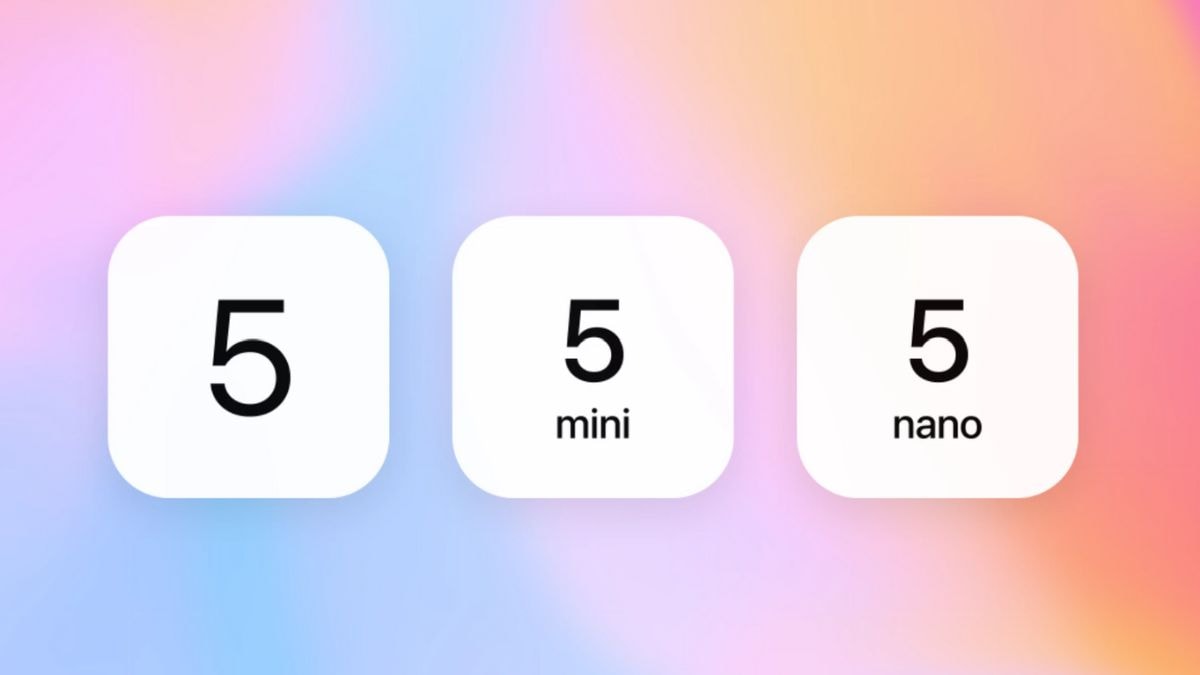OpenAI on Thursday released its latest family of frontier artificial intelligence (AI) models. Named GPT-5, it is said to offer a significant improvement in performance across coding, health, match, and visual perception. As per the San Francisco-based firm, customers can select between four types of AI models— GPT-5, GPT-5 Mini, GPT-5 Nano, and GPT-5 Pro, with different pricing based on the number of tokens used. There is a built-in router in GPT-5 which can change between large language models (LLMs) in real-time, depending on the requirement.
GPT-5 Plans, Availability
In a blog post, OpenAI said that GPT-5 is rolling out to ChatGPT free tier users today, with access to GPT-5 and GPT-5 Mini. It is also being made available to those enrolled in the ChatGPT Team plan, which is priced at $25 (roughly Rs. 2,200) per user, per month.
ChatGPT Plus users get extended access to the AI model, whereas the ChatGPT Pro plan, priced at $200 (roughly 17,500), offers unlimited access, along with availability of GPT-5 Pro as well. Meanwhile, the company will begin its rollout with the ChatGPT Enterprise and Edu plans on August 14.
As per the OpenAI, the use of GPT-5’s API will cost $1.25 (roughly Rs.110) per one million to input tokens and $10 (roughly Rs. 880) per one million to output tokens. GPT-5 Nano is the cheapest among the bunch, costing $0.05 (roughly Rs. 4) per one million to input and $0.40 (roughly Rs. 35) to output tokens.
GPT-5 Features
The San Francisco-based company said that GPT-5 is a unified system of LLMs which offer improved performance across coding, health, math, visual perception, and writing. It is claimed to be less prone to hallucinations and pretending to know things, with GPT-5 Thinking especially proficient in this. Instead, the AI system can decide between when to respond quickly and think longer to deliver accurate and comprehensive responses.
OpenAI claimed that GPT-5 outperforms all of its previous models in academic and human-evaluated benchmarks. Highlighting its coding proficiency, it is said to have scored 74.9 percent on the SWE-bench Verified. This score is higher than GPT-4.1 which registered a 54.6 percent score, positioning GPT-5 as the company’s most advanced model for coding purposes.
The new AI model also improves upon prompt adherence and agentic tool uses, helping it deal with multi-step requests, adapt to changes in the context, and co-ordinate across different tools. In essence, it can follow the prompts entered by the user with more discipline, as per the company.
GPT-5 is claimed to be OpenAI’s best performing model based on an internal benchmark which measures performance on complex and economically valuable knowledge work. It stated to be at par and sometimes better than experts, outperforming o3 and ChatGPT Agent across more than 40 tasks, including engineering, law, logistics, and sales.
There is also a built-in router, which can automatically switch between different models based on the requirement. Once the usage limits are reached, the queries are automatically run through a mini version of each model. As per the company, it plans to integrate these capabilities into a unified model.
To handle potentially unsafe queries, OpenAI has trained GPT-5 on a new form of safety training called safe competitions, which replaces the refusal-based safety training used before. It basically educates the LLM to provide a helpful answer up to the point it is possible to stay within its outlined safety boundaries. If it detects a need to refuse, it will provide a transparent response along with the reason, and provide safer alternatives. The company said that this approach is more nuanced and mitigates unnecessary overrefusals.
Microsoft Incorporates GPT-5
Microsoft has announced the incorporation of GPT-5 in its Copilot, 365 Copilot, enterprise, and conusmer offerings. It improves upon Microsoft 365 Copilot’s reasoning capabilities, enabling it to hold longer conversations and better understand the context. Further, Copilot is now better equipped to handle complicated problems, as per the company.
Customers with Microsoft 365 Copilot licenses can reason over documents, emails, and files. It is also being made available in Copilot Studio for building custom agents. Users can select GPT-5 in custom prompts.
Alongside, GitHub is onboarding GPT-5 in all paid GitHub Copilot plans. It is claimed to enable developers to write, text, and deploy code across GitHub Copilot Chat on github.com, Visual Studio Code and GitHub Mobile through the model picker. Meanwhile, developers in VS Code can also use it to develop agents without exiting the code editor.
Lastly, developers using Azure AI Foundry also get access to OpenAI’s latest family of AI model and take advantage of the router which leverages the AI-powered orchestration layer to determine the optimal model to use after evaluating each prompt for complexity, performance needs and cost efficiency of the task.




